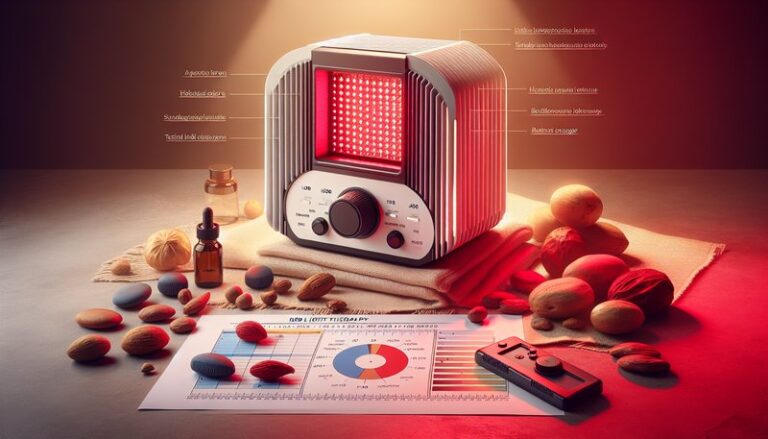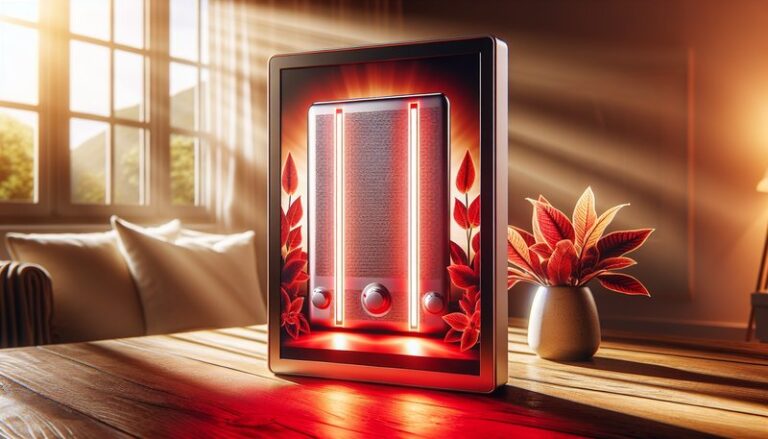Does Red Light Therapy Lower Blood Pressure?
Does Red Light Therapy Lower Blood Pressure?
Have you ever wondered if a simple light could make a significant impact on your health?
In recent years, red light therapy has gained attention for its potential health benefits, one of which includes its effects on blood pressure. This article will explore the concept of red light therapy, how it may influence blood pressure levels, and the various factors to consider before engaging in such treatment.
Key Takeaways
- Red light therapy may have a positive impact on lowering blood pressure through vasodilation.
- Research suggests that red light therapy can improve circulation, which could contribute to healthier blood pressure levels.
- It is essential to consider safety, personal health conditions, and professional guidance before starting red light therapy.
What is Red Light Therapy?
Red light therapy (RLT) is a treatment that uses specific wavelengths of red and near-infrared light to promote various health benefits. It is often employed in various fields, including dermatology, pain management, and sports medicine.
The therapy typically involves the use of LED lights or lasers that emit red light, stimulating cellular function and enhancing tissue repair. By penetrating the skin, this light can promote increased circulation and reduce inflammation, potentially affecting several bodily processes, including blood pressure regulation.
How Does Red Light Therapy Work?
Red light therapy is believed to work by boosting the production of adenosine triphosphate (ATP), the energy currency of cells. This increase in cellular energy can enhance physiological functions, including blood flow and oxygen availability. Additionally, the therapeutic light can induce vasodilation, which relaxes blood vessels and may lead to reductions in blood pressure.
What are the Benefits of Red Light Therapy?
Several advantages have been attributed to red light therapy, particularly for cardiovascular health.
Learn everything about Does Red Light Therapy Cause Cancer?
Improved Circulation
Regular use of red light therapy can enhance blood flow, delivering more oxygen and nutrients to tissues. This can be especially beneficial for individuals with compromised circulation, helping to maintain healthy blood pressure levels.
Reduced Inflammation
Chronic inflammation is often linked to various health issues, including hypertension. Red light therapy has been shown to reduce inflammation, which can contribute to lowering blood pressure.
Stress Reduction
Stress can negatively impact blood pressure. Some studies indicate that red light therapy may help reduce stress and promote relaxation, indirectly assisting in blood pressure management.
Get informed with Does Red Light Therapy Produce Vitamin D?
Enhanced Cellular Repair
By promoting quicker healing and tissue repair, red light therapy can improve overall cardiovascular health and may lower the risk of conditions that elevate blood pressure.
Is it Possible to Lower Blood Pressure with Red Light Therapy?
Yes, research indicates that red light therapy may assist in lowering blood pressure. However, results can vary based on individual health conditions and the specific parameters of the therapy, such as duration and intensity of light exposure.
What are the Advantages of Lowering Blood Pressure with Red Light Therapy?
Non-Invasive Approach
Red light therapy is non-invasive, making it an appealing option for individuals looking to manage blood pressure without medication.
Minimal Side Effects
Compared to pharmaceutical interventions that may cause unwanted side effects, red light therapy is generally considered safe.
Complementary Treatment
It can be used alongside other therapies and lifestyle changes aimed at lowering blood pressure.
What are the Disadvantages of Lowering Blood Pressure with Red Light Therapy?
Variable Efficacy
The effects of red light therapy may vary among individuals. Some may experience significant reductions in blood pressure while others may not observe any changes.
Limited Research
Although promising, more extensive studies are needed to confirm the long-term effectiveness of RLT as a blood pressure-lowering treatment.
Potential Cost
Professional treatments can be costly, and personal devices may require investment without guaranteed results.
What are the Things to Consider Before Using Red Light Therapy?
Consult Healthcare Providers
It’s crucial to consult with healthcare professionals before beginning red light therapy, especially if you have underlying health conditions or are taking medication.
Understanding Devices
Familiarize yourself with different RLT devices available on the market, as their specifications can influence outcomes.
Consistency is Key
Regular treatments are often necessary for observable results, so consider the time commitment involved.
Setting Realistic Expectations
Be aware that while red light therapy can potentially lower blood pressure, it may not replace traditional treatments or lifestyle modifications.
Monitoring Progress
If you decide to pursue red light therapy, keep track of your blood pressure readings to assess its effectiveness over time.
Potential Contraindications
Certain medical conditions or medications might interact negatively with light therapy, making it essential to disclose your health history to your practitioner.
What are the Alternatives to Red Light Therapy?
If you’re considering alternatives to manage blood pressure, several options are available:
Exercise
Regular physical activity is one of the most effective ways to lower blood pressure naturally. Aerobic exercises, like walking or cycling, can significantly improve cardiovascular health.
Dietary Changes
Adopting a heart-healthy diet rich in fruits, vegetables, whole grains, and low in sodium can profoundly impact blood pressure.
Medication
For some individuals, prescription medications may be necessary to maintain healthy blood pressure levels, particularly in more severe cases.
Mindfulness and Stress Management Techniques
Practicing meditation, yoga, or deep breathing exercises can reduce stress and promote lower blood pressure through relaxation.
Conclusion: Is it Recommended to Use Red Light Therapy?
While red light therapy shows promise in lowering blood pressure, it should not be viewed as a standalone treatment. It can be incorporated into a broader health strategy that includes lifestyle modifications and, if necessary, prescribed medications. Always consult with a healthcare provider to create a personalized plan that addresses your health goals.
Frequently Asked Questions
Can red light therapy replace medication for high blood pressure?
No, while red light therapy may assist in lowering blood pressure, it should not replace prescribed medications without consulting your healthcare provider.
How often should I use red light therapy for it to be effective?
Typically, frequent sessions are recommended to see noticeable benefits, but the exact frequency can vary. It’s advisable to follow a protocol from a healthcare professional or the device manufacturer.
Are there any side effects of red light therapy?
Generally, red light therapy is safe and has minimal side effects. However, some users may experience temporary redness or irritation at the treatment site.
How long does a red light therapy session usually last?
Sessions generally last between 10 to 30 minutes, depending on the device and purpose.
Is red light therapy suitable for everyone?
While many people can safely use red light therapy, those with certain medical conditions or light sensitivity should consult a healthcare provider before starting treatment.





